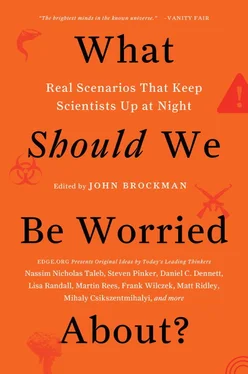From the evanescent beauty of sand paintings by Australian aboriginals and Native Americans to the great ziggurats and pyramids of ancient Mesopotamia, India, and Mesoamerica that functioned mainly to stimulate imagination—and from the foragers, herders, cultivators, warriors, and innovators of New Guinea, the Amazon, Africa, and Europe—a startling multiplicity of social and intellectual forms emerged to govern relations between people and nature.
By the time of Christ, four great neighboring polities spanned Eurasia’s middle latitudes along the trading network known as the Silk Road: the Roman Empire; the Parthian Empire, centered in Persia and Mesopotamia; the Kushan Empire of Central Asia and Northern India; and the Han Empire of China and Korea. Along the Silk Road, Eurasia’s three universalist moral religions—Judaism, Zoroastrianism, and Hinduism—mutated from their respective territorial and tribal origins into the three proselytizing, globalizing religions vying for the allegiance of our species: Christianity, Islam, and Buddhism. The globalizing religions created two new concepts in human thought: individual free choice and collective humanity. People not born into these religions could, in principle, choose to belong (or remain outside) without regard to ethnicity, tribe, or territory. The mission of these religions was to extend moral salvation to all peoples, not just to a “Chosen People” that would light the way for others.
Secularized by Europe’s Enlightenment, the great quasi-religious isms of modern history—colonialism, socialism, anarchism, fascism, communism, democratic liberalism—harnessed industry and science to continue on a global scale the human imperative of cooperate to compete, or kill massively to save the mass of humanity.
Soon, from the multiplicity of human cultural forms, there will likely be only one or a few. This is the way of evolution, some scientists say, for in the struggle for life only conquering or isolated forms survive. But the humanists among them hope that with vigilant intellectual and political effort, democracy, reason, human rights, and happiness will flourish in our one interdependent world. Yet science also teaches us that greater interdependence can also lead to greater vulnerability to cascading and catastrophic collapse from single unanticipated events. The two great world wars and the global economic crises of the last century could well be indicators of far greater risks to come.
Calls to “tolerate diversity” and “respect nature” are pale acknowledgments of the problem. Anthropology has virtually disappeared as a science of cultures, with the emphasis now either on personal experience in some slightly exotic place, like contemplating one’s own genitals the way others do or don’t, or on the cultural dynamics of the mundane, like bench sitters or subway riders. Psychology today considers that comparing, say, American with Chinese college students speaks to the breadth and depth of the human experience, although the apparent differences can usually be erased by a mere change in priming or framing (just suggesting that one might think about something one way rather than another). This tells us little about the true scope and limits of human thought and behavior. And political correctness, which attempts to enforce tolerance, creates bigotry over trivialities.
As the death of languages and cultures proceeds geometrically and further efforts at domestication of nature lead to further alienation from it (including establishment of “nature reserves” and efforts to control climate change), we may find our global culture imploding to a point of precariousness not so different from what it was 70,000 years ago when the human experience began with a bang.
ARE WE HOMOGENIZING THE GLOBAL VIEW OF A NORMAL MIND?
P. MURALI DORAISWAMY
Professor of psychiatry, Duke University Medical Center; member, Duke Institute for Brain Sciences
Should we worry about the consequences of exporting America’s view of an unhealthy mind to the rest of the world?
Biologists estimate that there may be between 1.5 million and 5 million subspecies of fungi, though only 5 percent (of the lower estimate) are currently categorized. To outsiders, it may appear that America’s classification of mental disorders is not too different. At the turn of the century, psychiatric disorders were mostly categorized into neuroses and psychoses. In 1952, the first version of the Diagnostic and Statistical Manual of Mental Disorders (DSM), the psychiatric diagnostic bible, formally expanded this to 106 conditions. DSM-II, published in 1968, listed 182 conditions; DSM-III (1980) listed 265 conditions; and DSM-IV (1994) listed 297. DSM-V is expected to be released later this year and will have many changes, including an unknown number of new conditions. Today, around 40 million Americans are thought to be suffering from a mental illness. In 1975, only about 25 percent of psychiatric patients received a prescription, but today almost all do, and many receive multiple drugs. The use of these drugs has spread so rapidly that levels of common antidepressants, such as Prozac, have been detected in the U.S. public water supply.
Two key studies from the 1970s illustrate some of the subjectivity underlying our psychiatric diagnoses. In 1973, David Rosenhan described an experiment in which eight healthy people who simulated fake auditory hallucinations and went for psychiatric evaluations were all hospitalized (for an average of nineteen days) and forced to agree to take antipsychotic drugs before their release. This by itself is not surprising, since doctors tend to trust patients’ description of symptoms. But what was revealing was the second part of the experiment, in which a psychiatric hospital challenged Rosenhan to repeat it using its facility and Rosenhan agreed. In the subsequent weeks, the hospital’s psychiatrist identified 19 (of 193) presenting patients as potential pseudopatients, when in fact Rosenhan had sent no one to the hospital at all.
In another study, in 1971, 146 American psychiatrists and 205 British psychiatrists were asked to watch videotapes of patients. In one case, involving hysterical paralysis of one arm, mood swings, and alcohol abuse, 69 percent of the Americans diagnosed schizophrenia but only 2 percent of the British did so.
Despite the DSM having been developed by many of the world’s leading minds with the best of intentions, the dilemmas illustrated by these studies remain a challenge: overlapping criteria of many disorders, wide symptom fluctuations, spontaneous remission of symptoms, subjective thresholds for severity and duration, and diagnostic variations even among Anglo-Saxon cultures.
DSM-III and IV, with their translation into multiple languages, resulted in the globalization of these American diagnostic criteria, even though they were never intended as a crosscultural export. Many foreign psychiatrists who attended the American Psychiatric Association’s annual meeting began implementing these ideas in their native countries. Western pharmaceutical companies seeking new markets in emerging countries were quick to follow with large-scale campaigns marketing their new pills for newly classified mental disorders, without fully appreciating the crosscultural variations. Rates of U.S.-defined psychiatric disorders are rising in many countries, including emerging nations.
In his insightful book Crazy Like Us: The Globalization of the American Psyche , Ethan Watters raises the worry that by exporting an American view of mental disorders as solid scientific entities treatable by trusted pharmaceuticals, we may be inadvertently increasing the spread of such diseases. We assume that people around the world react the same way to stress as we do. We assume that mental illness around the world manifests the same way as it does in the U.S. We assume that our methods and pills are better ways to manage mental illnesses than local and traditional methods. But are these assumptions correct?
Читать дальше












